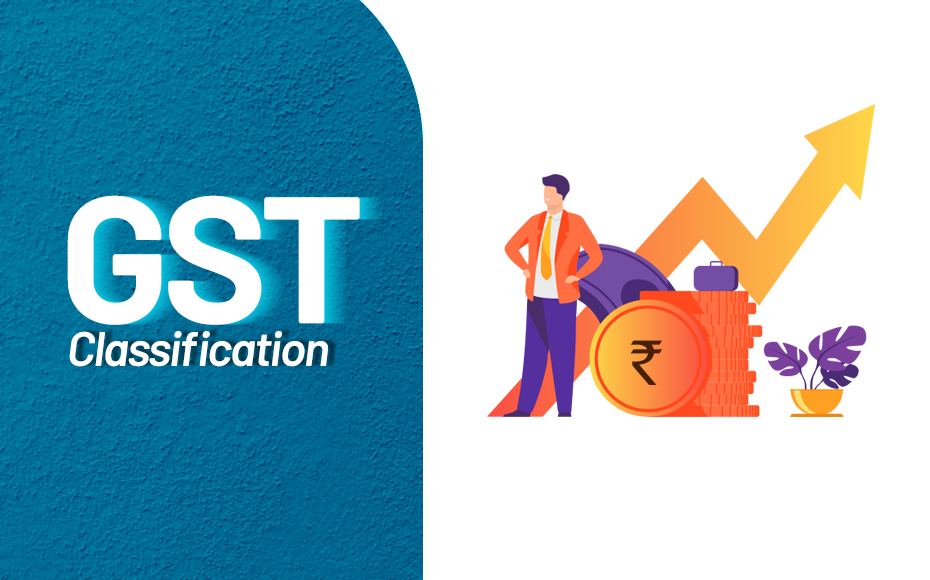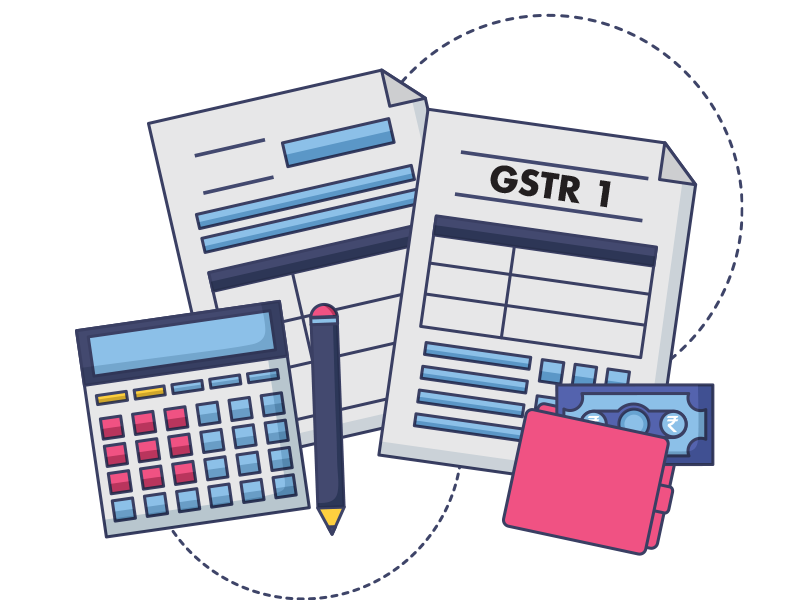Classification under GST: Role of HSN

What is classification?
There are thousands of tradable commodities chargeable to different rates of tax. Then how does one ascertain the applicable rate of tax on a particular product. The answer to this question is by classifying goods in different groups sub-groups according to their nature, composition etc. and then specifying rate for each such group of commodities. One may think that it would take some logical understanding and trade knowledge to classify goods, but this is easier said than done. For example, how would a gold pen be classified – as an item of gold or as a pen? The HS comes to rescue here by providing a uniform and standardized system of classification. The HS Code and the description of the commodity may not always be in tandem with the general commercial parlance and may throw surprises e.g., a commodity which should be charged at 5% as per general understanding, may either be exempted or charged at a higher rate given the HS code and the Chapter under which the same is found.
What is HS?
The Harmonized Commodity Description and Coding System generally referred to as “Harmonised System” or “HS” is an international product nomenclature developed by World Customs Organization (WCO) to ensure uniform classification of goods in international trade. In addition to its use in customs, HS is also used by the Governments across the globe as a statistical tool in economic research and devising trade policies. HS comprises of more than 5,000 commodities grouped under Sections and then Chapters, which are arranged in a logical structure. Under a chapter, each commodity is identified by a 6 digit code and a uniform classification is ensured by way of well-defined rules to read and interpret the HS.

The Harmonized System Convention entered into force on January 1, 1988. India too adopted the Convention as one of the founder- Contracting Party. With 13 countries on Board, 4 more countries were required by September 30, 1987, so that the HS could be rolled out on January 1, 1988. On September 22, 1987, 15 new countries joined, thus enabling the roll out on the determined date. Today more than 200 countries have adopted HS in formulating their customs tariff.
Why is HS applicable to GST in India?
Notification No. 1/2017 – CT (Rate) dated 28.6.2017, popularly called as GST Rate Notification, contains the schedules of rate of tax to be levied on goods supplied under the GST law. Originally there were 6 schedules; the 7th was added with effect from July 18, 2022.Notification No. 2/2017
CT (Rate) dated 28.6.2017 enlists the goods which are exempt from GST. In both the above notifications goods are classified basis Chapter/ Heading/Sub-heading/Tariff Item and then applicable rate of tax/exemption is provided against each goods.
Clauses (iii) and (iv) of the explanations to both the above Notification are reproduced here under: (iii) “Tariff item”, “sub-heading”, “heading” and “Chapter” shall mean respectively a tariff item, sub-
heading, heading and chapter as specified in the First Schedule to the Customs Tariff Act, 1975 (51 of 1975)
(iv) The rules for the interpretation of the First Schedule to the Customs Tariff Act, 1975 (51 of 1975), including the Section and Chapter Notes and the General Explanatory Notes of the First Schedule shall, so far as may be, apply to the interpretation of this notification.
The above explanation clearly lays down the importance of Customs Tariff Act in classifying a commodity under GST and consequently determining the rate at the which the same is taxed. India has adopted the HS and consequently the Customs Tariff Act contains the HS and the commodity descriptions released by the World Customs Organisation. The 8-digit HS code is the basis of the code that is contained in the GST Rate Notification. Hence, whenever there arises a need to find the rate of GST, it is the Customs Tariff Act which should first be referred to instead of the GST
rate notification having done the same, the result should be compared with the GST rate notification and if there is a difference between them, then the GST Rate notification shall prevail. However, such difference should be brought to the notice of the Fitment Committee, so that the anomaly can be addressed suitably. If the same is not addressed, commodity imported would fall under the respective HSN as per Customs Tariff Act and if the same is supplied domestically, it would merit classification as per the relevant entry in the GST rate notification. Thus, it is quite possible that there will be a difference between the rate of tax under IGST and the rate when charged for domestic supplies. In matters relating to classification, the process that goods pass through may also have a bearing and in thus, the concept of manufacture as prevalent during the excise times may be referred to the decisions of the Supreme Court can act as guidance while deciding whether a commodity is X or whether it is Y and under which HSN the same would fall. The product under question may be the same but the ingredients added to it may give rise to differential rates. For example, flavoured milk in plain form is different from the flavoured milk added with nuts. Similarly, commodities can be differentiated when the same are ‘ready-to-cook’ or ‘ready- to-eat’. The GST Rate Notification is brought in to facilitate the trade that entered the HS domain for the first time. Hence, there is bound to be a mismatch with Customs HS. One may find mention of products in Customs HS but the same may be missing in GST rate notification e.g., mango Pulp finds a specific mention in Customs HS whereas the same is missing in GST rate notification which gave rise to issues relating to its taxability.
How are services classified in GST?
GST is levied on supply of both goods and services. Therefore, after establishing that an activity falls within the four corners of the term ‘supply’, the taxpayer needs to first classify the supply as supply of goods or supply of services with the help of the relevant definitions provided in section 2 and scheme of classification provided in Schedule II to section 7 of the CGST Act, 2017. Once it is established that the particular activity is supply of goods, the classification, as mentioned above, is determined basis Chapters 1 to 98 of Customs Tariff.

However, if the activity is classified as supply of services, the Customs Tariff does not provide any aid in classification of services as it does not have any Chapter to cover services. Therefore, service codes (tariff) for services are provided by way of a ‘Scheme of Classification of Services ‘given as an Annexure to Notification No. 11/ 2017-Central Tax (Rate) dated 28.06.2017, which is the rate notification for services. The said Annexure contains entries under Chapter 99 as also the Explanatory Notes to provide guidance for interpreting the said entries. It may be noted that there is no Chapter 99 for services in the Customs Tariff. The Scheme of Classification of Services under GST along with the Explanatory Notes are based on United Nations Central Product Classification. The Preface to the
Scheme of Classification of Services under GST lays down that where a service is capable of differential treatment for any purpose based on its description, the most specific description shall be preferred over a more general description. Notification No. 12/2017 CT (R) dated 28.6.2017, which enlists the services that are exempt from GST and Notification No. 13/2017 CT (R) dated 28.6.2017, which enlists the services, GST on which is payable under reverse charge, also make use of the service codes as provided in Scheme of Classification of Services under GST.
To summarize the discussion, accurate classification of goods and services is vital for determining the correct GST liability. Classification can be done accurately by following the Rules of Interpretation in case of goods and Explanatory Notes to the Scheme of Classification in case of services; logical understanding, common sense or experience alone would not
suffice for determining the correct classification of goods and services. Classification is not only relevant for ascertaining the rates of tax, but also the availability of exemptions and
taxability under reverse charge. Appropriate classification is an essential condition to avoid legal disputes and demands from the tax authorities.


One Response